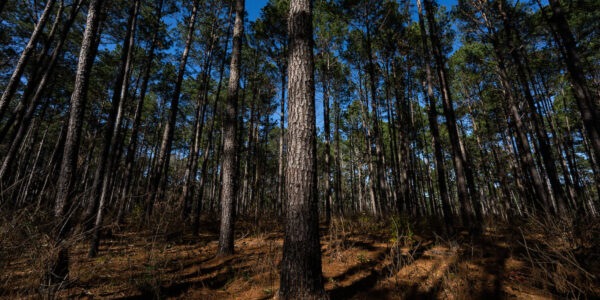Matagorda County
Matagorda County is in the Coastal Prairie region of Texas, bounded on the north by Wharton County, on the east by Brazoria County and the Gulf of Mexico, on the west by Calhoun and Jackson counties, and on the south by the Gulf of Mexico and Tres Palacios, Matagorda, and East Matagorda bays. Bay City is the county’s seat of government and largest city founded in 1894, and because of its location near the center of the county it replaced Matagorda as the county seat.
The name Matagorda, Spanish for “thick brush,” was derived from the canebrakes that formerly lined the shore. Crossed by the once highly flood-prone Colorado River, which bisects it from north to south, the county extends across 1,612 square miles of mostly open prairie. The growing season averages 295 days per year. Live oak, post oak, pin oak, pecan, ash cottonwood, elm, red cedar, and mulberry grow in the county’s forests; mesquite and prickly pear have invaded the Bay Prairie in patches where the land has been overgrazed.
The area harbors a variety of wildlife, including bobcats, coyotes, otters, white-tailed deer, and numerous smaller mammals, as well as oysters, shrimp, fish, snakes, and waterfowl. A number of protected wildlife habitats, including Big Boggy National Wildlife Refuge, the Mad Island Wildlife Management Area, the Runnels Family Mad Island Marsh, and the Nature Conservance, are located in the county.
In 1982, 80 percent of Matagorda County was in farms and ranches, and of this, 28 percent was cultivated. The county derives 67 percent of its agricultural receipts from crops, especially rice, sorghum, soybeans, wheat, hay, and cotton. Potatoes, peaches, and pecans are also grown here. Cattle ranching has been important to the local economy. Mineral resources include salt domes, brine, petroleum, and natural gas.
Visit the County Office WebsiteMatagorda County Staff
Greg Baker
- County Extension Agent-Agriculture and Natural Resources
- County Coordinator
- Agriculture and Natural Resources
Dianne Drennan
- County Extension Agent - Family and Community Health
- Family and Community Health
Denise Green-Grisham
- County Extension Agent
- 4-H Coordinator
- 4-H and Youth Development
Natasha Boren
- County Adiminstrative Assistant FCH/Marine
- Support Staff
Piper Hansen
- Administrative Assistant - Ag and Natural Resources
- Support Staff
Amy Nowlin
- Extension Agent - Coastal Marine Resources
Cynthia Page
- County Office Manager/Administrative Assistant-4-H & Youth Development
- Support Staff
Resources Available in Matagorda County
AgriLife Extension offers key programs across the state that are organized and supported at the county level. Click the links below for more information about local programming or contact your county office.
4-H & Youth Development
Healthy South Texas
Texas Sea Grant
Texas Master Naturalist Program
Extension Topics for Matagorda County
Life & Health

Business & Community

Environment & Natural Resources

Animals & Livestock

Plants & Crops

News from Across the State
Matagorda County
Contact Us
Bay City, TX 77414-5203